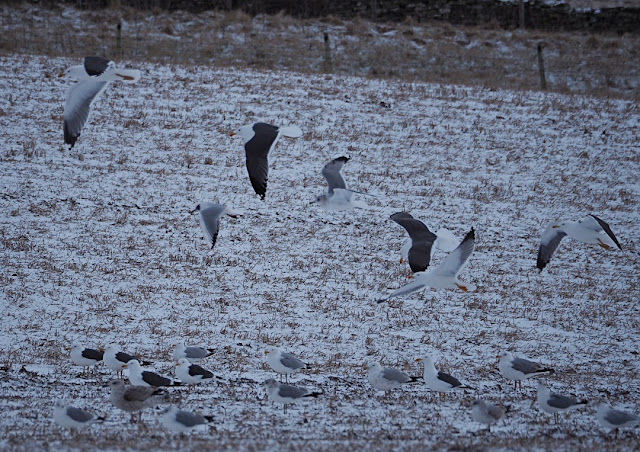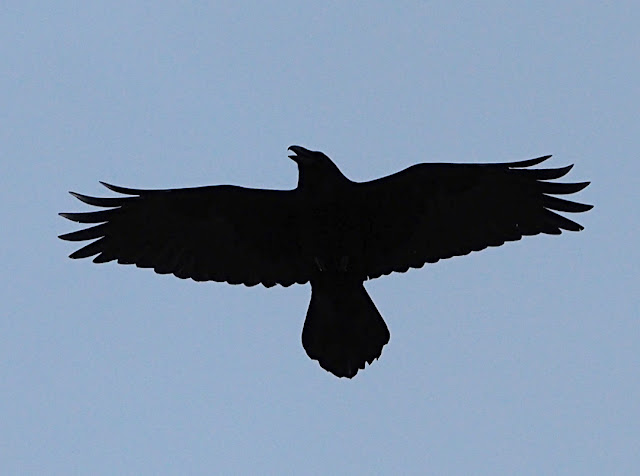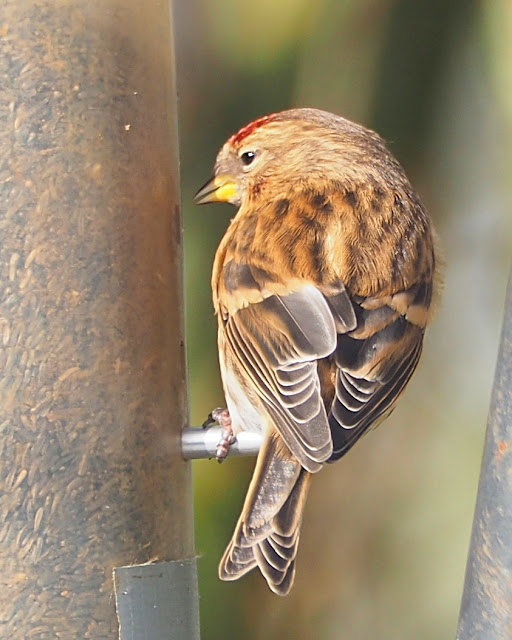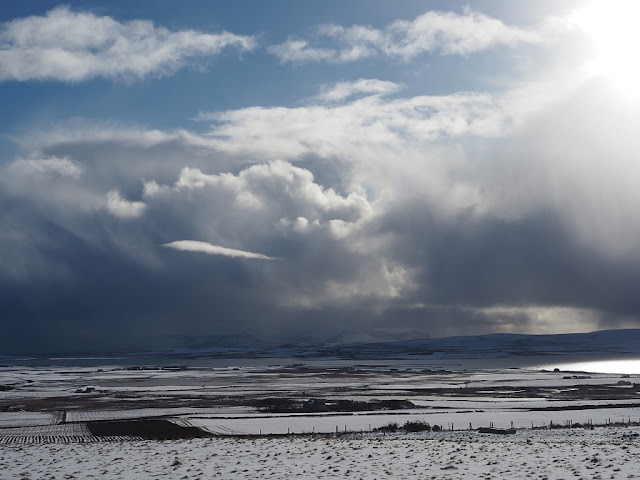Too much, far too much snow. Stop it!
 |
| Garden yesterday. |
Ok, it had all gone by lunchtime yesterday and this morning it's gone now. But there's not much point in putting moth or pheremone traps, or even colour traps out in this.
I shouldn't complain, I've been doing ok with the grass clumping. Plenty of new species and lots of interest, I spent most of yesterday identifying and photographing things.
The technique is: find a suitable grass clump, I'm going for ones that will fit in a dog poo bag. Cut the clump off at the base with a sharp knife. Put in dog poo bag and tie, then put that bag in a second dog poo bag for added security, reduce escapes. Keep cool, so tie to the outside of rucksack and keep in the fridge or somewhere cold until you're ready to sort. When you're ready use a white tray or washing up bowl and have a pooter to hand and some tubes and a paint brush. Warm the clump up indoors in the bags. Then pull apart carefully in the washing up bowl. Poot up everything that moves. You can then put the remains of the clump over a garden sieve, over a bowl to extract what's left if you think there might be more.
I've encountered quite a few new species and made a few good discoveries so far. The now confirmed Ichneumon albiger is still probably the star find, but some other very nice beasts have turned up, including a new Carabid for me which is not an everyday event by any means.
 |
| Olisothopus rotundus. |
This is not an uncommon species but it had previously eluded me. Found in a grass clump at Yesnaby along with three species of Stenus, two common enough but one surprising one which I need to get checked.
 |
| Stenus latifrons, I think but this needs checking. |
There is a prior record of this species in Orkney, but this is a rare species in Scotland.
The most interesting beast found from this clump at Yesnaby was though this Chalcid parasitoid.
 |
| Callitula pyrrhogaster - thank you PV for confirming the ID. Very tiny at 2.2mm. |
There's a paper that's linked to in the side panel about this genus, and includes a key to European species, part of the paper is in French only, the key is in English also though. C. pyrrhogaster is the only one of the five species that is not fully winged and the other four species have not been found in the UK. There are just eleven records on the NBN for this species and just one unconfirmed record for Scotland. However, this is probably a very widely distributed species across the UK. The hosts are Diptera associated with grasses.
In the garden from another grass clump I found a very, very tiny beetle, Stenichnus collaris.
 |
| Stenichnus collaris, 1.4mm. |
Surprisingly, this species is a Staphylinidae, a member of the sub-family Scydmaenidae, which used to be a family in its own right.
On the bird front, Pied Wags are now just about daily, Mepits have arrived and Skylarks are sinking. A pair of Pintail have graced The Shunan a couple of times, and the Water Rail is still making occasional appearances on the trail cam.

























































